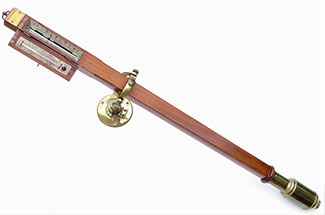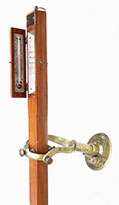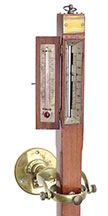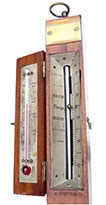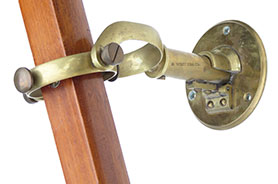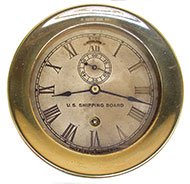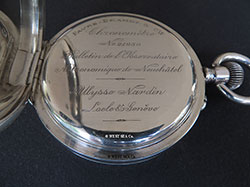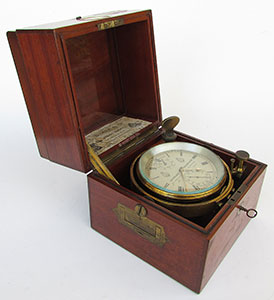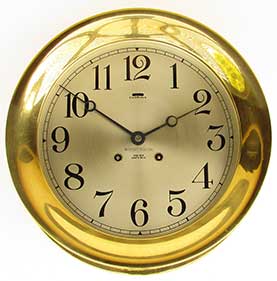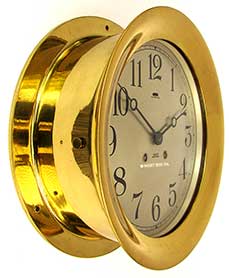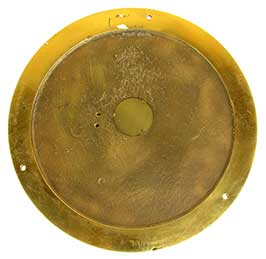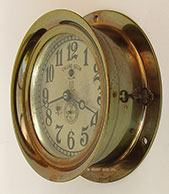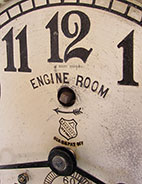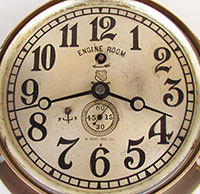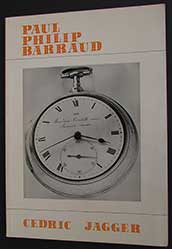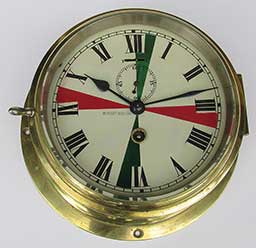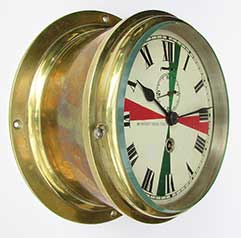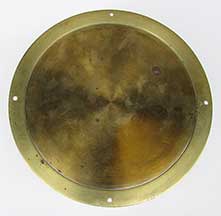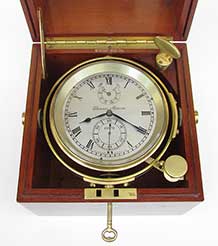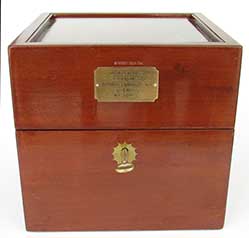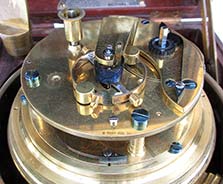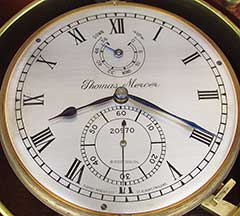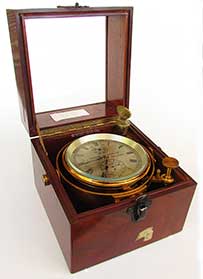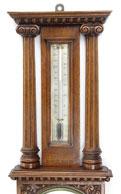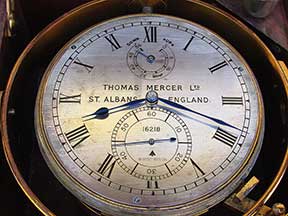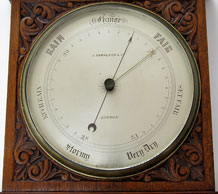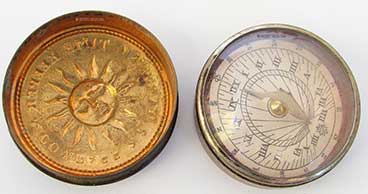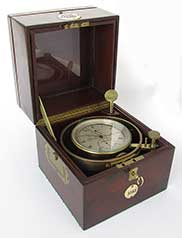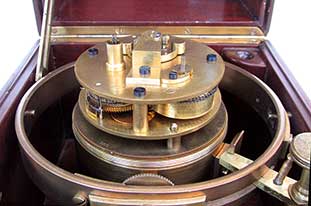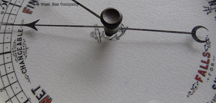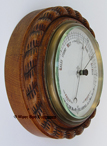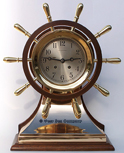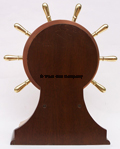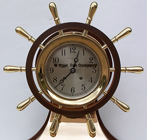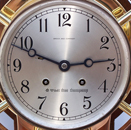|
13.27 DECK WATCH. Very rare
and highly collectible deck watch made by the prestigious
Swiss firm Ulysee Nardin, Le Locale for the Japanese
Imperial Navy, circa 1922. The brass retailer’s
plate on the top of the box is embossed “Favre Brandt
& Cie Yokohma & Osaka” with the watch
serial number “21930.” Also known as
a “torpedo boat watch” this precision timekeeper
was a standard in the major Navies of the world during the
early 1900’s. The white enameled dial has bold
Roman numerals and a minute chapter swept by solid gold
spade hands. It is fitted with a sunken 48 hour
Up/Down indicator at the 12 o’clock position and a
sunken seconds bit marked in 10’s by Arabic numerals
swept by a fine gold seconds hand at 6 o’clock.
The dial is signed just about the center arbor “FAVRE
BRANDT & Cie” then “ULYSEE
NARDIN LOCLE & GENÉVE.” The
hallmarked sterling silver case reads “,900”
with a spread-winged bird stamped on the underside of the
outer cover. The back of the inner cover is
beautifully hand-engraved “FAVRE-BRANDT &
CIE Chronométre No 21930 Bulletin l’
Observatoire Astronomique de Neuchatel – o –
Ulysee Nardin Locle & Genéve – o
–” The inside of the cover is nicely engine-turned
and is also marked “,900.” The movement is
stem wound, thumb nail set, 21 jewel bi-metallic balance
with lever escapement. The gold washed backplate is
hand-engraved “ULYSEE NARDIN LOCLE & GENÉVE”
and is fitted with a lever fast/slow marked “A”
and “R.” This impressive 35 size watch is
larger than the largest men’s pocket watch. It
is housed in its original 3-tier mahogany box with fitted
purple velvet-lined lift-out compartment. The lower
portion of the box retains it functional box lock with
skeleton key, while the middle portion of the box has a
glazed viewing port and a button latch which securely closes
the top cover. The box measures 4 1/8th inches wide by
5 ¼ inches deep and 2 ½ inches thick. The
entire presentation is in outstanding original condition
showing good age with respectful use. The watch is a
strong runner and keeps good for nearly 2 days on a single
wind. In actual shipboard use it was wound
daily. 
Provenance: This watch was retrieved from the pilot
house of a Japanese destroyer moored in Tokyo Bay at the
time Japan signed the unconditional surrender aboard the
Battleship MISSOURI, which ended World War
II. A signed and notarized letter attesting to these
facts accompanies this offering.
The firm of Ulysee Nardin (1823-1876) was founded in Le
Locle, Switzerland by its namesake in 1846, to make
pocket chronometers, repeaters and complicated
watches. The firm began to produce chronometers in
1875. After Ulysee’s death, work was carried on
by his son, Paul David, then Alfred, Gaston and finally
Raymond and Claude, well into the 20th century. They
were recipients of many Prize Medals for their superb
work including London 1862; Paris 1889, 1900, 1937; Chicago
1910; Milan 1906; Buenos Aires 1910; Berne 1914; Genoa 1914;
Liege 1920; Tokyo 1922; Brussels
1938, and in 1939 New York , Barcelona and Zurich.
(Tony Mercer, “Chronometer Makers of the World,”
1991, N.A.G. Press Colchester, Essex).
In his book, “Military Time Pieces,” 1992, AWI
Press, Marvin Whitney pictures an identical watch in Figure
6, page 380. It is captioned “Ulysee
Nardin deck watch, Movement No. 21964, 21 jewels, 8 adj.,
lever escapement, bimetallic balance with Breguet
hairspring. Silver hinged case, stem wound and pin
set. Placed on trial at the U.S. Naval Observatory
January 19 to June 26, 1922. Ranked 9th out of
10 pieces, with a Trial No. of 21.89. Watches with
trial numbers greater than 25 were rejected.” He
goes on to say on page 384, “Trial records show
that a myriad of makers submitted torpedo-boat watches for
competitive trial, namely: Agassiz, Ditisheim, Elgin,
Hamilton, LeRoy, Longines, Nardin, Patek
Philippe, Vacheron & Constantin, and Waltham. The
majority of these watches were purchased by the U.S. Navy
during the years 1906 to 1922.”
Watches were first introduced into Japan in the 1860s.
Until the end of that century, the watch trade
continued to be dominated by the Swiss-based traders in
Yokohama, François Perregaux (1861) and James
Favre-Brandt & Cie ( 1863), who imported Swiss
watches and sold them to Japanese businesses for
distribution throughout the country.
|
![]() for ordering details.
for ordering details.